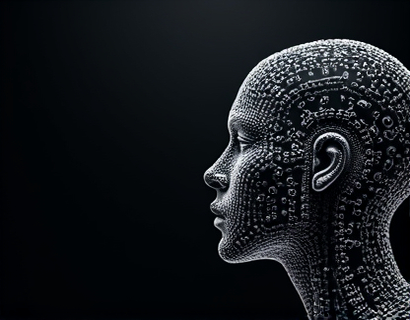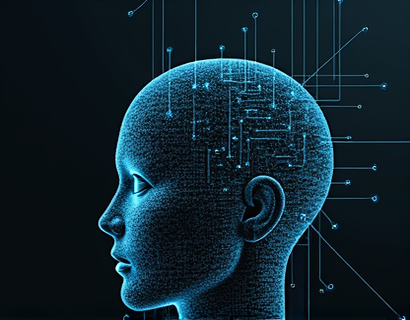Transforming Healthcare Access Through AI-Driven Chat Platforms
The integration of artificial intelligence in healthcare has opened new avenues for improving patient engagement, education, and access to specialized medical services. An innovative approach to this integration is the development of an AI-driven chat platform designed to deliver verified, specialized clinic information and educational tools tailored for users of all ages. This platform aims to revolutionize the way healthcare information is accessed and understood, particularly for families, students, educators, and healthcare professionals. By focusing on content verification and creating a child-friendly version, this technology ensures safe and educational interactions, making complex medical information accessible and comprehensible.
Enhancing Patient Engagement with AI Chat Technology
The traditional methods of accessing healthcare information are often cumbersome and not user-friendly. Patients and their families frequently struggle to find accurate, up-to-date information about clinic services and medical procedures. An AI-driven chat platform addresses these challenges by providing a conversational interface where users can ask questions and receive immediate, verified responses. This not only enhances patient engagement but also empowers individuals to make informed decisions about their health and wellness.
Content Verification for Trustworthy Information
One of the critical features of this AI chat platform is its commitment to content verification. In the realm of healthcare, accuracy is paramount. The platform integrates with trusted medical databases and collaborates with healthcare professionals to ensure that the information provided is not only current but also accurate and reliable. This verification process builds trust with users, making the platform a go-to resource for healthcare-related inquiries.
Personalized Healthcare Guidance
The AI chat technology is designed to offer personalized guidance based on user interactions. Whether a user is seeking information about a specific medical condition, looking for recommendations on clinics, or needing advice on preventive care, the chatbot tailors its responses to the individual's needs. This personalized approach enhances the user experience, making healthcare information more relevant and actionable.
Educational Tools for Comprehensive Learning
Understanding complex medical information can be challenging, especially for those without a healthcare background. To address this, the platform includes educational tools that break down information into easily digestible formats. These tools cater to various learning styles, incorporating text, images, and interactive elements to facilitate comprehensive learning. For students and educators, these resources can be invaluable for teaching and learning about healthcare topics.
A Child-Friendly Version for Safe Interactions
Recognizing the importance of accessible healthcare information for children and students, the platform offers a child-friendly version. This version is designed to promote safe and educational interactions, ensuring that young users can explore healthcare topics without encountering inappropriate content. The child-friendly interface uses simple language, engaging visuals, and interactive elements to make learning about health and medicine both fun and informative.
Promoting Health Literacy from a Young Age
Introducing children to healthcare concepts early on is crucial for promoting health literacy. The child-friendly version of the chat platform covers a range of topics, from basic hygiene and nutrition to more complex subjects like mental health and chronic conditions. By making these topics accessible and engaging, the platform helps build a foundation of health knowledge that can last a lifetime.
Facilitating Clinic Access and Services
Beyond educational content, the AI chat platform serves as a direct gateway to clinic services. Users can ask about appointment scheduling, service offerings, and clinic locations. The chatbot can provide real-time information, helping users navigate the healthcare system more efficiently. For those seeking specialized care, the platform can offer detailed insights into different clinics and their expertise, making it easier to find the right fit for their needs.
Supporting Healthcare Professionals
Healthcare professionals can also benefit from this AI-driven chat technology. The platform can serve as a tool for administrative tasks, such as answering common patient queries, providing clinic updates, and offering guidance on patient education materials. This can help streamline clinic operations and allow healthcare providers to focus more on patient care.
Tech-Savvy Individuals and the AI Chat Interface
For tech-savvy individuals, the AI chat interface offers a cutting-edge way to interact with healthcare information. The platform leverages advanced natural language processing and machine learning algorithms to understand and respond to user queries accurately. This level of sophistication ensures that even complex medical questions are handled with precision and efficiency.
Inclusive Design for Diverse User Needs
The platform is designed with inclusivity in mind, ensuring that it meets the needs of a diverse user base. This includes considerations for users with disabilities, such as screen reader compatibility and adjustable text sizes. By adhering to accessibility standards, the platform ensures that healthcare information is available to everyone, regardless of their abilities.
Building a Community of Health Advocates
By providing a reliable and educational resource, the AI chat platform fosters a community of health advocates. Users can share verified information, discuss health topics, and support one another in their health journeys. This community aspect not only enhances the user experience but also contributes to a broader culture of health awareness and proactive care.
Future Prospects and Continuous Improvement
The development of an AI-driven chat platform for healthcare is an ongoing process. Continuous feedback from users and healthcare professionals will be essential in refining the platform's capabilities and expanding its features. Future updates may include integration with wearable health devices, advanced predictive analytics for personalized health recommendations, and enhanced virtual reality experiences for medical education.
Conclusion
The integration of AI-driven chat technology in healthcare represents a significant step forward in making medical information accessible, accurate, and user-friendly. By offering verified insights and a child-friendly learning environment, this platform addresses the needs of a wide range of users, from patients and families to healthcare professionals. As the healthcare landscape continues to evolve, such innovations will play a crucial role in enhancing patient care and promoting health literacy across all ages.










































